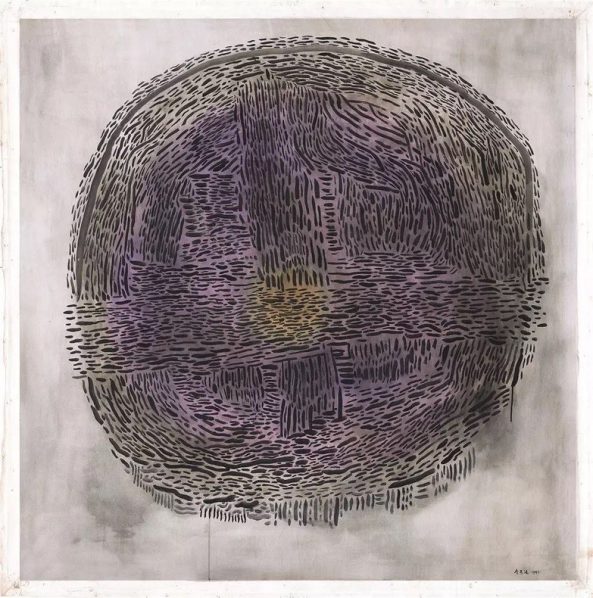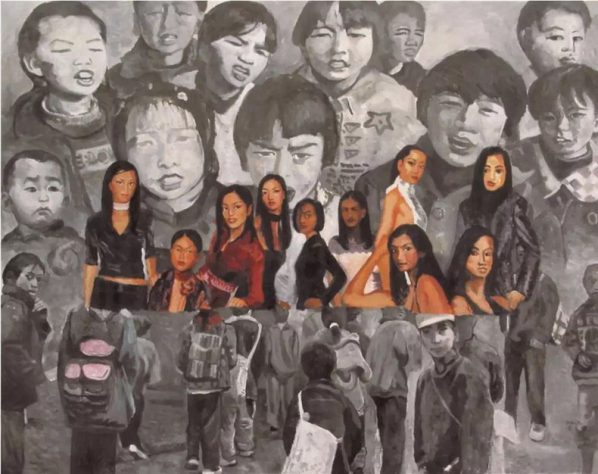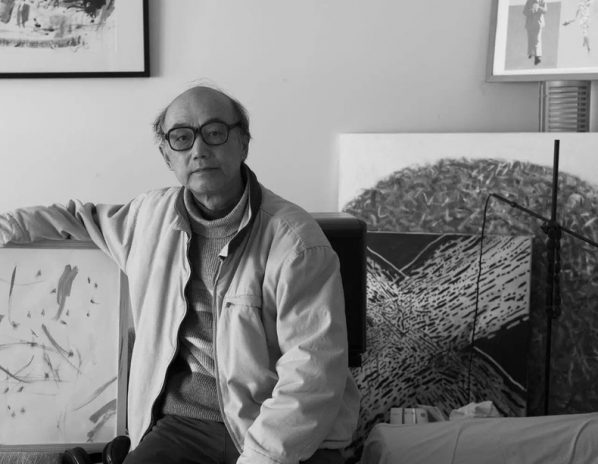
From December 24, 2016 to March 26, 2017, the “Yu Youhan” retrospective exhibition (part of PSA Collection Series) will be held at Power Station of Art in Shanghai. This exhibition is the largest and most comprehensive retrospective to date for Mr. Yu Youhan, an important figure in the history of Chinese avant-garde art. Over two hundred works of paintings, sketches, and archival material will be presented, including his early abstract works, the “Circle”series, the “Ah! Us” series, the “Yimeng Mountain” series, along with approximately twenty newer works from recent years.
Born in 1943 in Shanghai, Yu Youhan graduated from the Central Academy of Craft Art (now the Academy of Arts & Design of Tsinghua University) in 1973 and had taught at the Shanghai Art and Design Academy. In the early 1990s, with his “Political Pop”, Yu Youhan became one of the earliest contemporary Chinese artists to have received international attention. Even before that, however, his abstract works with their own distinctive idiom and form had already firmly established the artist’s pioneering role in the history of avant-garde art in China.
The particular background of the times he lived in meant that his artistic path had been rather circuitous and uneven; for the same reason, however, he broke free of the shackles of Soviet academicism. The artist has said that since moving from his “composition” phase, he had studied works by Cézanne, Miró, and the American Color Field artists; thereafter, principles of “composition” aesthetics permeated his later works of divergent styles. We shall see Yu Youhan in this exhibition as an artist who spans different styles, an artist who dares try the innovation, an artist who loves his country and people.

Yu Youhan, The “Circle” Series 02
The “Circle” Series
Since 1984, the “Circle” has emerged from Yu Youhan’s abstract paintings as a particular visual element to become enriched as a distinctive visual language of the artist’s own. With “circle” as the subject, this series employs divergent styles, with dots and lines as strokes. The black and white circles can be traced to a tradition of landscape painting dating back to the Song and Yuan dynasties (circa tenth to fourteenth century CE) as well as the gray tile-roofed houses in the lower Yangtze region of Jiangnan. The gradual addition of color circles was intended as an experiment with greater aesthetic possibilities.
When talking about his “Circle” series, the artist mentions his inspiration from Laozi on multiple occasions, “The one bears two. The two bear three. The three bear the ten thousand things”-hinting at certain qualities of the world and the universe. As the critic Gao Minglu has noted, “The artist focuses on ‘nothingness’ or the ‘void’. Unlike the dichotomous notion of abstraction in Western and classical realism, his abstraction invites others to enter; it is the way of ‘both heaven and earth find new embodiment in the shape desired, and all things become plastic under the tip of his brush.’”
Even though Yu Youhan’s creative style evinces different manifestations throughout different phases, he has never stopped working on the “Circle” series. In recent years, he has also tried out new techniques and explored themes about the unknown.

Yu Youhan, Children and Models, 2002; Acrylic on canvas, 250x196cm
“Ah! Us” series
The “Ah! Us” series appeared after the “Mao” series and was for the most part created between the second half of the 1990s and the early 2000s. With regards to “Ah! Us”, the artist has commented that what he painted was “the entanglements of emotions day after day, night after night, over an entire lifetime, and the fear of not hiding far enough from the crowds.” They are the portraits of the multiple amid violent social upheaval, revealing out of that seemingly contradictory discourse the artist’s feelings about the “human”.
“Yimeng Mountain” series
Yu Youhan once stated, “After painting the people, it is natural to paint the land again.” In his early years of drawing and painting from life, he trod all over the former French Concession in Shanghai, villages in the province of Hebei, as well as places like Waigang in Jiading, among others. In the summer of 2002, he went with his colleagues to tour the site for painting at Yimeng Mountain. Leaving behind the skyscrapers of the city, he focused his emotions on the unadorned simplicity of the village. When he returned to Shanghai, he created the “Yimeng Mountain” series.
This “Yu Youhan” retrospective is a continuation of the “PSA Collection Series”. Power Station of Art will this time cast a spotlight on pioneering figures of art in Shanghai, in the hopes of again sorting through the history of avant-garde art in the 1980s and of looking back on this instructive historical juncture—in order to excavate new perspectives and to showcase new research.

About the artist
Born and raised in Shanghai, Yu Youhan’s artistic career is closely tied to the development of contemporary art in Shanghai. One symbolic event was the “A Joint Exhibition of Six Mondern Painters” that he organized in March 1985 under the auspices of the Student Club at Fudan University; the other five artists were Yu Youhan’s fellow students at the Shanghai Art and Design Academy: Ding Yi, Qin Yifeng, Wang Guqing, Ai Dewu, and Feng Lianghong. For Yu Youhan, this exhibition was where he first showed the “Circle” series; for the Shanghai art world, this signified the collective emergence of modern painting. In key events thereafter, like the “First Shanghai Concave-Convex Exhibition” in 1986 or the six Shanghai artists heading to the Venice Biennale in 1993, Yu Youhan was always a key participant.
Yu Youhan lives a typical Shanghainese everyday life; the changes in his artistic style, however, have always marched in lockstep with the great currents of societal upheaval. This relation, both near at hand and distant, also grants us the opportunity to reflect on the relationship, within the context of contemporary Chinese art, between the creative subject and objects. Yu Youhan’s oeuvre and the influences from Western art therein reflect the choices and trajectories faced by contemporary Chinese art after 1985.
About the exhibition
Dates: 2016.12.24-2017.03.26
Venue: Power Station of Art
Courtesy of the artist and Power Station of Art, for further information please visit http://powerstationofart.org.




























